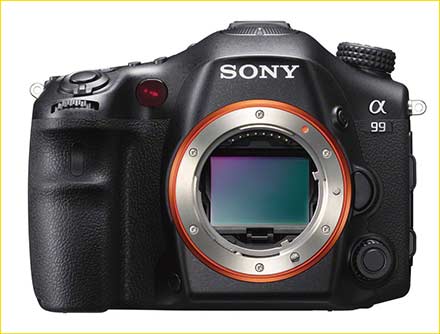
Sony Alpha A99
Corporate Backgrounder
One of the world’s best known brands in consumer electronics and entertainment is Sony. Movies, music, TVs, computers, cameras, semiconductors, phones, tablets, games, and audio and video devices too numerous to count. Sony products are ubiquitous.
But of late, like so many global companies during this recession Sony has fallen on hard times. Some once seemingly unassailable categories (remember when Sony Trinitron TVs were the best?) are now just shadows of their former selves, vassals to the Korean TV juggernaut. Others are in the midst of a state change, such as the music industry. Sony plays in some tough neighborhoods, but they are also a tough competitor. Knowingwhen to hold ’em and when to fold ’emis the trick, and this Sony seems to be doing.
Sidebar 1: In 2011 Sony Global had a net loss of US $319 Million on revenue of $19 Billion.
Sidebar 2: Sony’s semiconductor division is on the road to world domination with their sensors. These now appear in cameras from many of Sony’s competitors. Why? Because they arethat good, and that’s what competitive camera makers will tell you off the record as well as by their OEM purchases . Right now Sony is simply making some of the best sensors available.
In late 2010 Sony publicly stated which product categories were going to be missions critical for them.Imagingwas one of them. What this means is that cameras and video products are going to increasingly gain focus from Sony, while some other categories will, if not be cut loose, at least not get the R&D and marketing attention that ones like Imaging will.
The results show. Sony has become a dominant player in compact system cameras with their NEX series. According to a recent study the Sony NEX system leads the segment in the US, Canada, France, Russia, China, Taiwan and Korea, and is in second place in Japan, the UK, Germany and Hong Kong. And the mirrorless segment continues to grow, accounting for 18% of all interchangeable lens cameras sold last year.

It’s Fall Again. September, 2012. Clearview, Ontario.
Sony A99 with 70-200mm f/2.8G @ ISO 800
What to Call It?
But I’ve asked you here today not to talk about Sony’s global business strategy or compact system cameras, though these all play into an understanding of theraison d’etrefor Sony’s camera strategy. We’re here in particular to look at theSony Alpha A99, that company’s new flagship camera. But what kind of camera is it?
I’d like to call it aDSLR, but some nit-pickers don’t like that because there’s no prism and moving mirror. Sony calls it anDSLT(because of their Translucent mirror, which actually isn’t translucent), and some might call it aMirrorlesscamera (but then it would be confused with other ILCs (Interchangeable Lens Cameras – as some magazines call them), and in any event Mirrorless tells you what it isn’t, not what it is. So, I think I’m going to call it a DSLR and if you don’t like it, sue me.
In Hand

Sony Canada was kind enough to provide me with a review sample of the A99 just prior to a shoot which Nick Devlin and I had planned for Algonquin Park, Ontario; Moose in rut and Fall colour. The camera received was described as “late pre-production” and as such suitable for image quality evaluation, though not final in every last detail.
I have to admit to more than a small amount of eagerness at trying the A99. Four years ago I had bought into the Sony A900 system and over the next few years put together a very high quality lens collection, Zeiss and Sony G glass. For a couple of years I used the system intensely, but as newer and more capable systems started crossing my desk for testing the A900 began hibernation and the lenses went unused. Sony simply didn’t have a competitive high-end full-frame camera. The lack of Live View and video capability were becoming an increasing liability in this market segment. Sensor performance was also starting to show its age. The A900 wasn’t particularly good at high ISO even when it was new, let alone against the current generation from Canon and Nikon. Let it be clear though that image quality at low ISO was and remains superb.
But the A99 changes things yet again. Gone is the boxy look of the A900 and A850 that some loved and some hated. Compared to the curved bar of soap smoothness of the A99 the A900 seems by comparison to be from the Soviet era of utilitarian design. Frankly, I kind of liked the no-nonsense straightforwardness and form-follows-function utilitarianism of the A900. I really did. But it does look somewhat dated in a highly competitive marketplace as well as lacking quite a few competitive contemporary features.
But now there’s the A99, andOh You Kid. This is one sexy camera, all curves and fluid ergonomics. It also has virtually every tech feature known to mankind. The A99 is a camera geek’s wet dream come to life.
I’m not going to list every feature and function, I’d rather be out shooting than typing lists, so instead I’m going to review those features that appealed to me (or not) and let you know what I think of them. If I have left something out, it’s either an oversight or simply because that particular feature isn’t one that’s important for the type of photography that I do. Your needs may differ.

Orange and Yellow. September, 2012. Algonquin Park, Ontario.
Sony A99 with 70-200mm f/2.8G @ ISO 500
Build Quality and Materials
The A99 has a comfortable grip and feel for someone with medium-sized hands. There are a lot of mechanical controls, so many in fact that once the camera is properly configured by the user there is little need to delve into the menus. There are also three custom mode positions, so that the camera can be configured for different types of shooting or filming and switched to one of these in an instant. These are on a traditional Mode dial on the top left of the camera featuring a central locking button, something that not enough cameras offer, and which I regard is almost a must. There’s nothing worse than grabbing ones camera out of the bag and expecting it to be in M and finding that it’s in A, or worse yet S with a totally inappropriate shutter speed, because the dial was accidentally turned during handling.
As you can read on the spec sheets, the A99 has a weather sealed magnesium alloy body, but I’m not sure which if any of Sony’s newer lenses are weather sealed as well. Sony is also claiming a 200,000 actuation shutter life, their ruggedest yet, and competitive with most other pro-level systems.
Two Kayaks. Smoke Lake, Algonquin Park. Ontario
Sony A99 with 70-200mm f/2.8G @ ISO 100
The Rear LCD
This is typically for Sony, large, bright and sharp. Furthermore it is articulated on the vertical axis. This means that it can be used as a top monitor, a bottom monitor and also turned 180 degrees so that it faces forward. Cameras without articulated LCDs are starting to feel constrained by comparison when I shoot with them.
The Hot Shoe
When Sony purchased the Konica / Minolta camera business some years ago (mostly Minolta’s IP) they inherited and decided to use that company’s proprietary locking hot shoe instead of an industry standard design. Not such a hot idea. Adaptors were needed for things like flash triggers. Now, Sony has for the first time introduced a standard hot shoe, but in a 180 degree turn-around ships the camera with an adaptor for the old style proprietary shoe so that those with older style Sony flashes wouldn’t lose their investment. Just as when Sony added SD card compatibility to its Memorystick slots, it’s just good business to go with the mainstream.
But, ever the innovators, Sony has added what they call aMulti Interface Shoethat allows for attaching proprietary (of course) Sony video accessories, such as an audio connector box with XLR connectors. Versatility –yes. Proprietary –not so yes.
In-Body Stabilization
Sony has in-body sensor-based image stabilization, and that’s a very good thing. It is my preference to lens-based stabilization because it works will all lenses that can be mounted on the camera. In the case of Sony’s superb line of Zeiss auto-focus lenses, this is a real plus, because otherwise Zeiss doesn’t do AF on any of its branded lenses (yet). I have found over the years with the A900, as compared to other systems that I have used and tested, that Sony’s IBIS is essentially as effective as lens based designs.
Discrete Red. Algonquin Park, Ontario
Sony A99 with 300mm f/2.8G II @ ISO 100
Dual Cards
The A99, as most of its competition in this pro-semi-pro segment has dual card slots, in this case dual SD cards. The top slot can also take Sony’s proprietary Memory Sticks, if you happen to have any of those lying about.
The dual card design is comprehensive, allowing JPGs to one and raws to the other, stills to one and video to the other, or copying files between cards. Uniquely, you can have the camera record to both cards simultaneously for an automatic in-camera back up. Sony claims that the camera does not slow down in performance when this is done.
Focus Range Control & Dual Phase Detection
This has got to be one of the most useful and innovative things for action photographers that Sony has come up with in a while. The A99 has two separate phase detection autofocus systems. One is a traditional 19 point (11 cross type) system while the other is an additional 102 point phase detection system built into the sensor itself. (Please note that this on-sensor Phase Detection system currently only works with six lenses, the SAL2470Z, SAL2875, SAL50F14, SAL300F28GII, SAL70400G, and SAL50050F4G. Other lenses will require firmware upgrades to be able to take advantage of this new system.
There is also a button on the rear panel titled AF Range. When pressed the front and rear control wheels allow you to set the range which the system should limit itself to for autofocusing. So, for example, if you’re shooting a sports event from the sideline and someone walks in front of you the camera will ignore making a focus change. Similarly it will not focus on the distant stands when there is no one on the field in the main focus area. It works brilliantly and a I congratulate Sony on one of the most truly useful new features in autofocus in quite some time.
Image IQ
Sony seems to have the whole image sensor thing nicely nailed. They appear in a couple of short years to have become the leader in sensor fabrication for many of the major Japanese companies. This new 24 Megapixel full-frame sensor, is, based on my week of field testing, nothing short of state-of the art. Shooting only raw, and using the latest release of Adobe Lightroom 4.2, I got very pleasing and mostly accurate colour. If Adobe’s interpretation is not to your liking you can always use Adobe DNG Profile Maker. Don’t bother complaining, just make it the way you want it.
The A99 claims to have a special Multi Segment Low-Pass Filter. I don’t see that it adds much, since a fair amount of post processing sharpening is still required to bring back appropriate accutance lost to the AA filter. I really wish that Sony would join others like Leica, Nikon, and now Pentax, along with all all medium format camera makers, and leave off the AA filter on sensors over 16MP. Other than using better lenses, this is the one thing that users would benefit from in their search for higher image quality. But the A99 appears to have a medium strength AA filter, and so it is what it is.
What there is though is just downright excellent IQ. DxOMark will have to bestow the camera with its numeric blessings in the weeks ahead, but I have no doubt that the A99’s sensor will scope in the top few percentile of all cameras to date.
Noise Performance
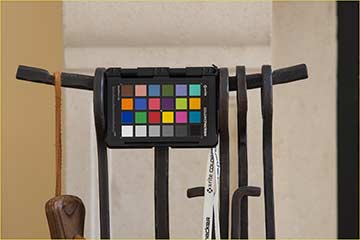
As soon as I got the camera I wanted to see its high ISO performance. This isn’t that important for the type of shooting I do but I know that many consider it an important benchmark. Sony has been scoring highly recently with its latest generation of sensors, and the A99 has their newest technology in their latest 24MP full frame sensor.
Above is the full test frame and below 100% crops. Not a scientific test by any means, but until DxOLabs gets a production camera and publishes their results it’ll do me.







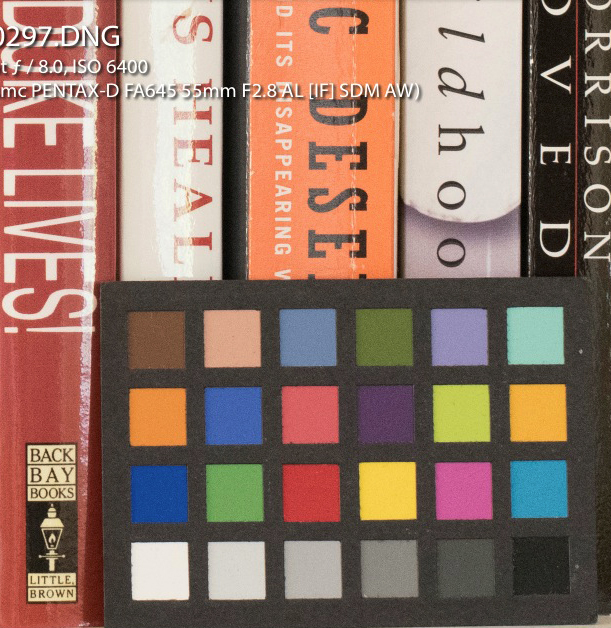
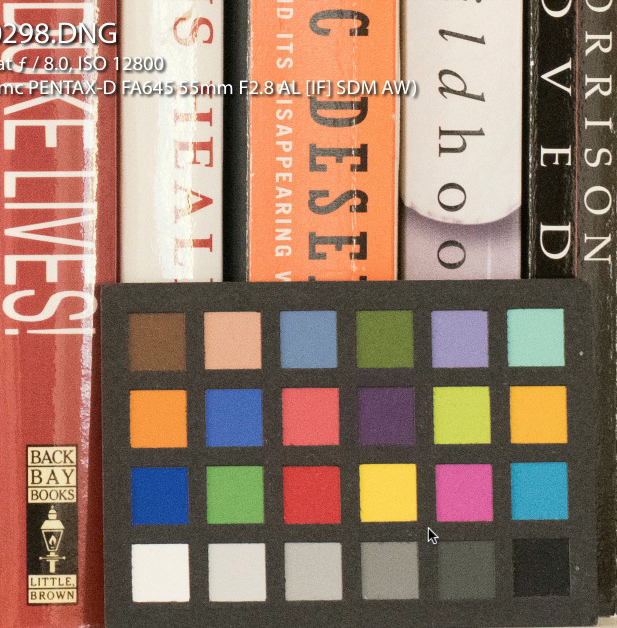
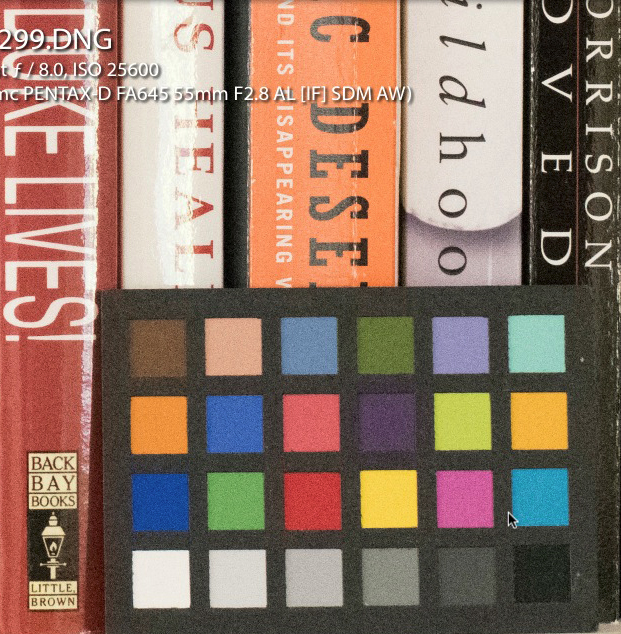
Clearly noise isn’t an issue up to and including ISO 1600. From there to and including ISO 6400 a bit of noise reduction will produce highly acceptable images for most applications. The two highest sensitivities are noisy, but how useful they may be will depend on each user’s particular needs.
I can only show you a small part of the image at 100% magnification so that grain and noise can be judged, but I will mention that on screen and prints there is very high colour consistency throughout almost the entire ISO range.
Video
The A99’s video capabilities are very impressive, at least on paper. I shot some casual video, but because of the limited time I had with the camera I decided to concentrate on its stills capabilities. But it’s worth mentioning some of the highlights, such as 1080 60P as well as 24p. And, of course it’s full frame, so the magical shallow depth of field that narrative film makers covet is there. Combine this with some of Sony’s fast Zeiss and G Series lenses and you can have shallow DOF that far exceeds that of traditonal motion picture 35mm (in terms of shallowness, that is).
Sony also “gets” that serious film makers who want to shoot video with a full frame DSLR do so for that one main reason, and that’s shallow depth of field. This means a full rig style of shooting, not hand-held, and therefore the use of an extra monitor and or external recorder. Sony, like Nikon, and Panasonic with the new GH3, understands that this is what film shooters want, and so has equipped the A99 with a live overlay-free HDMI signal. Well done, and a feature box that serious film makers will be pleased to check off.
Soft Glen. Algonquin Park, Ontario
Sony A99 with 70-200mm f/2.8G @ ISO 640
Silent Multi-Controller
Another real innovation on the A99, in addition to the focus range control mentioned above, is what Sony calls a Silent Multi-Controller. This is a small protruding wheel with a center push button located on the front left of the camera, that allows a wide range of controls to be adjusted while the camera is being held at eye level. Press the button to select the function desired and then rotate the wheel with the tip of ones finger. This will particularly appeal to cinematographers concerned about noise pick-up when the camera’s built-in mics are used (not likely to be the case with serious film makers though), nevertheless it also means less vibration and easier control even when making adjustments when shooting stills.
The Kitchen Sink
The glossy brochure that I have in front of me (high-end car makers don’t even do these any more – they’re expensive to produce) is 32 pages long. Technical features, one after the other are highlighted and explained; concentrated pixel technology for getting more light to the sensels, making the pixels larger and thus more sensitive, a 14 bit imaging engine, new front-end LSI chips for faster data throughput, area specific noise reduction, in-body stabilization, built-in GPS, auto compensation of lens shading and lens aberration, 0.05 second shutter responsiveness, enhanced focus tracking with 19 point (11 cross point) AF areas and on-sensor 102 point phase detection sensors (an industry first), and on and on including other features already mentioned. Oh yes, did I mention Sony’s well known in-camera Panoramic Sweep mode, Auto HDR, and other trick modes?
Depending on the individual photographer’s needs this is a massive cornucopia of features and functions. Many may go unused, but for some they will be just what’s needed to master a certain type of shooting assignment. The plethora of features can be mostly managed once it’s determined how best to configure the camera to ones needs, so this isn’t a complaint, since they mostly stay out of the way when you have the camera personally customized.
Whither Translucent Mirror?
Here’s something to ponder. What’s the future of Sony’s pellicle mirror technology, what they call the Translucent Mirror? It’s purpose is to allow for light to reach either or both a viewfinder and a phase detection autofocus array, while simultaneously passing the majority of the light to the sensor, primarily allowing Live View but also avoiding moving mirror cost, complexity, weight, and of course vibration.
Now, the viewfinder can be optical via a prism (as was the Canon Pelix and EOS RT SLRs of decades ago), or it can be an EVF, as we see on the A99 and other Sony so-called SLTs. But an EVF doesn’t need the light semi-reflected from the pellicle mirror, the way an optical VF does. It gets its data directly from the sensor.
So what does the Translucent mirror do? It simply acts as a light collector for the phase detection autofocus system. OK, fair enough, But the industry is moving forward. On-sensor contrast detection focusing system have matured in the last couple of years, and as seen on the latest cameras from Olympus and Panasonic are really very fast and accurate. Now Sony has pulled off another first and put Phase Detection autofocus capability right onto the sensor.
Obviously, with the A99 Sony has taken advantage of now having two separate autofocus sensing system, on-sensor and separate, and have done some cool things with it, such as their excellent and unique AF Range Control. But, and I ask this seriously – has the recent development of very good on-sensor contrast detection AF, and now from Sony on-sensor phase detection AF, not rendered the whole translucent mirror technology somewhat redundant? Maybe not today, but in a year or two almost certainly.
What this means is that if one is not pursuing a traditional glass prism with moving mirror approach, what does the Translucent Mirror contribute? Cameras like Sony’s own NEX 7 and the new Fuji X-E1 shows that the EVF is such a small component that it can now be located almost anywhere, including the nose friendly top-left of the body. So, why do we still need all of the camera bulk if an EVF can be made so small, and AF can now be done very effectively right off the sensor?
My closing thought on this is that Sony is a technology driven company; one that has never been afraid to push the envelope and also certainly not one afraid of introducing truly innovative, even disruptive technologies. They frequently marry this with closed system proprietary accessories, but when they’re wrong they relent, as seen by their adoption of SD cards when Memorysticks got steamrollered in the general marketplace.
Mixed Peak Colour. Algonquin Park, Ontario
Sony A99 with 70-200mm f/2.8G @ ISO 640
Summary
There is no doubt that the Sony A99 is a powerhouse camera, with enough features, capabilities and especially image quality to keep both pros and advanced amateurs happy. But, as I’ve written above, there are a couple of impediments to success that Sony will face, and which I believe they should have figured out beforehand.
The first of course is the use of an EVF. All Compact System Cameras have EVFs and these are being widely accepted. I have used a Panasonic GH2 for some time and have extensively shot with the Sony NEX-7. The Olympus OM-D5 is also a winner in this category, and I am very happy to use them, EVFs and all. They are what they are, and the EVF makes their small size and light weight possible.
In the mid-range APS-C DSLR style camera the use of an EVF may not be seen as a competitive handicap because this type of camera typically has a smaller, dimmer and more distant viewfinder. A quality EVF therefore is competitive, and for some users offers well understood advantages. But in the full-frame area the game changes. Yes, full-frame has a larger sensor so that traditional 35mm format focal lengths make sense, and the shallow depth of field available is appreciated by many. Also, by keeping the pixel count moderate (as Sony has done with the A99) it is possible to produce even higher image quality at the same resolution.
But one of the key advantages, especially to Pros and advanced amateurs who are familiar either with full frame DSLRs of the past decade, or film-based cameras prior, is the large and bright view possible though a mirror reflex with a prism. Shadow areas are open rather than black holes, colours are accurate and natural, fine details are visible, and one can see and focus and compose even with the camera turned off. These are significant advantages, and for many experienced photographers are among the main raison d’etre for appreciating what full-frame has to offer.
I had been grumpy all week while we were shooting in Algonquin, complaining that I was not happy using the A99’s EVF in either bright sunlight or dim forest glens. I simply knew from four years of experience shooting with the A900 and its large glass prism and mirror, that I was not “seeing” as effectively as I was used to, or would have liked to be.
At the end of the week when we returned to the studio, to get a handle on what we were seeing (or not) Nick Devlin and I did a side by side viewfindershoot-out . We lined up the A99, A900, Sony NEX-7, Olympus OM-D E5 and Fuji X-E1. (Original typo corrected). We put on lenses of comparable focal length and maximum apertures and looked though the cameras, focusing and composing, both indoors and outdoors and under varying light levels.
The point was not to pick a winner (though in the EVF category we thought that the Olympus was superior in terms of clarity and refresh rate) but we wanted to particularly compare the A900 DSLR’s traditional prism and mirror against the A99’s EVF. In the end it wasn’t that the A900 optics were all that much larger and brighter (indoors they were in fact less bright, though the A99’s was more noisy), but that the clarity and accuracy of a really good OVF system was missed. It’s as simple as that. I would say that if you’re new to photography within the past 5-8 years this won’t bother you. If you’ve shot with a full frame DSLR (film or digital) in the past, you may want to visit a Sony Style store or other retailer before jumping into an A99, just to be sure that it’s what you expect, and that you think that you can find happiness with for the next few years.
One day when the last of the optical VF / mirror reflect cameras disappear from the shelves and the buyer has no choice this will have become academic, But in the meantime against price and or segment competitive cameras such as the Nikon D800, D600, and Canon 6D, comparisons are in order unless one is totally committed to ones existing lens collection. I’ll have more to say on this momentarily.
In the end, with the Sony A99 we have a camera that delivers superb image quality in a full frame 24 Megapixel format. High ISO noise performance is excellent and operationally there is little that is missing. One can quibble with the design of some interface controls, but then this is true of every camera. The use of an EVF / pellicle mirror notwithstanding, for many photographers this camera will be a dream, and there’s hardly a contemporary feature that I can think of that’s lacking, except maybe for built-in WiFi.
The EVF Translucent Mirror Reality
I know that this section is not going to endear me to anyone in the Sony community, but as always I have to call them as I see them. I have been a big fan of Sony’s new EVF. In late 2011 and early 2012 I spent five months living in Mexico and shot more than 8,000 frames with my NEX-7. I realized and discussed in my review at the time the realities and shortcomings of using an EVF, but my comments were on the whole benign. The reason that I wasn’t more critical at the time was not because I didn’t see the shortcomings, but that they were ameliorated by the entire gestalt of the NEX-7 itself. Here was an almost pocket sized APS-C 24 Megapixel camera with a pretty terrific EVF. It was almost like the story of the talking dog. It wasn’t so much what it had to say, but that it could talk at all.
Now we have Sony taking this same EVF technology (still one of the better ones on the market), and marrying it with their so-called translucent mirror technology, and putting them both into a full sized, full-frame DSLR. And, if hints from Sony executives are to be believed, this model likely spells the end of the use of rapid-return mirrors and glass prisms in that company’s DSLRs (or DSLT’s as they perversely prefer to call them).
Speaking as plainly as I can – I don’t care for it. While the Sony EVF works fine on a NEX camera, and even on an APS-C sized model, it just seems out of place on a pro-grade full-frame DSLR. I stress the word full-frame, because to my mind this lies at the core of the issue. Previous Sony DLSR/DSLTs have used this same EVF, but they are competing with other brand’s APS-C sized sensor cameras, which typically have small, dim and distant appearing optical viewfinders. But one of the big selling points of full frame DSLRs is that they have larger, full sized (usually 100%) viewfinders, and they are bright and with natural clarity, contrast and dynamic range; essentially the same as what the human eye sees unaided.
When I first picked up the A99 my very first impression (I’d been using my Nikon D800e the day before) was that there was something wrong. What it turned out to be was the outcome of virtually a lifetime of using full-frame film and digital cameras with their large and bright viewfinders. Holding up the A99 side by side with a camera like the D800, or new Nikon D600 or Canon 6D, brings the matter to light – so to speak. As good as it is, the Sony EVF just can’t compete in terms of realistic contrast, brightness and overall clarity to a full frame glass prism viewfinder.
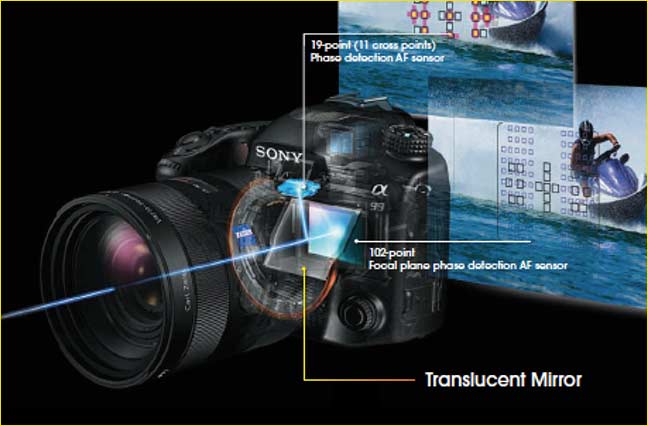
And in reality, that’s one of the things that attracts photographers to full frame cameras. A large bright viewfinder has a definate role in both the pleasure of use as well as the functionality of such a camera. So why isn’t this as much of problem with Sony’s APS-C cameras, and especially their NEX series? In the case of the APS-C cameras it’s that the relative difference to competitive optical VF models is less. In the case of the NEX cameras it’s one of expectations and willingness to accept trade-offs.
I have no beef with Sony’s translucent mirror technology. There’s a small light loss, and likely a small resolution reduction, but nothing to get fussed about. It also has real advantages, such as the ability to feed an optical image directly to the sensorandthe Phase Detection sensor at the same time. Canon used a pellicle mirror back in 1965 with their Pellix camera and again in 1989 with the EOS RT.
Sony could have (and in my opinion should have) used an optical prism and finder with the A99. It would also have eliminated the EVF switching lag, which can be annoying when going back and forth quickly between the EVF and LCD. Of course one would lose the fully electronic image, with instant playback in the EVF and other things that video people like. Amateur video users like EVFs but serious film makers will still have to purchase accessory electronic viewfinders or clip-on external monitors. They need these regardless.
There’s one other downside to an EVF, and that’s that the camera needs to be powered on to be able to see though it. With a traditional DSLR’s optical / prism viewfinder that camera can be lifted to ones eye for framing and composition without power. The image can be focused and if a zoom lens is attached the focal length changed before turning the camera on. No battery waste, particularly at the end of a long shoot when the battery may be low and you’ve left your spare battery back at the car a mile or two away.
The issue of OVF vs. EVF has to also be seen in the context of competitive price point and market positioning as well. Currently (early October, 2012 from B&H) the Nikon D800 is $2,999, while the Sony A99 at $2,798 is just $200 less. T he Canon 6D at $2,099 and the Nikon D600 at $2,096 are both a significant $700 less expensive. There is no denying that the A99 offers a lot of camera for the money, and as we’ve seen above it has almost every feature enthusiast photographers want. But when it comes to its use of an EVF rather than a prism / optical viewfinder in combination with its translucent mirror I feel that Sony has sailed on the wrong boat. Loyal Sony fans will undoubtedly not be swayed, but I believe that when a prospective customer is standing at a sales counter looking though the viewfinders of these four cameras by way of comparison, Sony will have a tough sell on its hands, particularly at its current uncompetitive price point.
Nick Devlin’s View
My friend and collegue Nick Devlin spent the better part of a week shooting alongside me in Algonquin, trying the A99 himself (he was shooting with an Nikon D800e), and listening to my stream of conscious praises and complaints. Here are his comments…
My view is that there is nothing inherently good about EVFs. They are at best a necessary evil, chosen for the form-factor advantages they bring and the cameras they make possible. Sony clearly does not share this view, since they built this camera around an EVF simply for the sake of doing so. It offers no notable advantage of any sort, most notably not in price. I can see no reason to chose an EVF in any context where it does not significantly reduce the size, weight or price of the camera, or substantially enhance its usability. The case is simply not made out beyond, “It’s cool new technology”.
To me, the experience of viewing the natural world through an EVF is like crashing at a cheap motel, closing the blinds, and turning on the small, fuzzy old cathode-ray tube TV on the dresser. It’s a shame, because this is otherwise a cracker of a camera, really nice to hold and behold. – Nick
A Parting Thought
Based on my personal experience using the A900 since its introduction four years ago, and now field testing the A99 in the real world, as discussed above I believe that the marketplace success of the Sony A99 will rest on whether advanced photographers considering the purchase of a top-speced, large sized, full frame DSLR will find the use of an EVF preferable to a large DSLR’s optical viewing system. Both the also new Canon 6D and Nikon D600 offer that traditional solution while the Sony A99 takes the EVF path. I believe that this issue will weigh more heavily on photographers considering either upgrading or cross-grading than any other of the camera’s features, performance, or design aspects, excepting maybe price.
Let me be even more provocative. What if Sony had built the A99 with the same excellent prism and reflex mirror as the previous A900 and A850, but had also included either a built-in or optional accessory EVF? Imagine being able to plug Sony’s hi-resolution NEX EVF into the newMulti-Interface Shoeand be able to go to Live View and select whether to use either the LCD or EVF, or switch at will to a traditional optical finder. Choose the one that appeals most or works most effectively in a given situation.
This isn’t so far fetched. The new M Leica will have three seperate finders; its traditional window optical finder, Live View on the rear LCD, or an accessory EVF. If Sony had been brave enough to take this approach not only could they have justified the A99’s higher price, but also trumped the competition with something truly aggressive and unique in DLSRs.
October 2012
You May Also Enjoy...
Window on Las Vegas
Please use your browser'sBACKbutton to return to the page that brought you here.
Featured-01
This page features selected photographs from my portfolio taken during 2001that I am particularly pleased with and for which there is an interesting story. Current entries can




